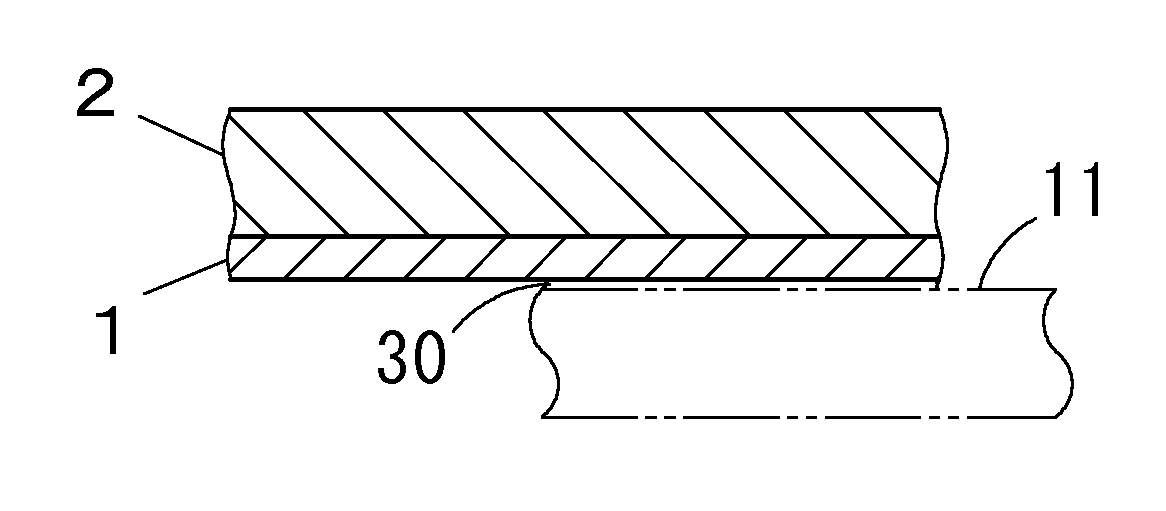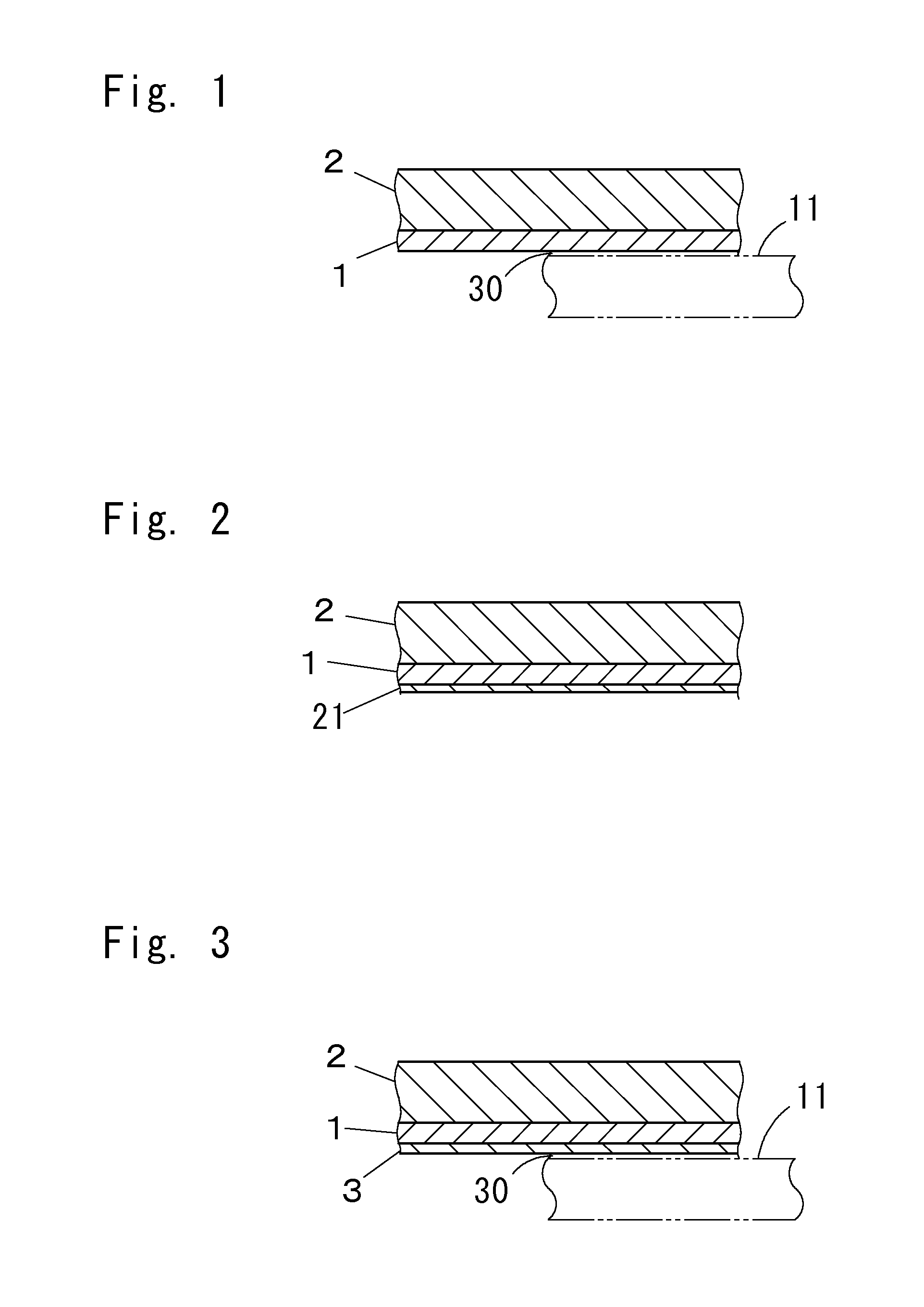Aluminum bonding alloy, and clad material and aluminum bonding composite material each having bonding alloy layer made of the alloy
a technology of aluminum bonding alloy and alloy layer, which is applied in the direction of metal-working apparatus, non-electric welding apparatus, metallic material coating process, etc., can solve the problems of significant deformation of bondability, poor mechanical strength and corrosion resistance of aluminum material (a single-layer material made of aluminum), and impairing the bonding strength present, etc., to achieve excellent corrosion resistance, workability and bondability
- Summary
- Abstract
- Description
- Claims
- Application Information
AI Technical Summary
Benefits of technology
Problems solved by technology
Method used
Image
Examples
example 1
(1) Manufacture of Aluminum Boding Alloy
[0070]Pure Ni (Mg=0%) and Ni—Mg-alloys with various amounts of Mg were melted to produce ingots as shown in Table 1. Each ingot (32 mm in thickness) was hot-rolled at 1000° C. for a hot-rolled plate (8 mm in thickness). The hot-rolled plate was cold-rolled (through five passes) into a cold-rolled plate (2 mm in thickness and 30 mm in width). During the rolling, the processing state of the plate was observed, and the result is shown in Table 1. In Table 1, the following symbols each indicate evaluation of the workability: “xx” indicates the case where the rolled plate was broken in the stage of the hot rolling, “x” indicates the case where the rolled plate was substantially broken in the stage of the cold rolling, “Δ” indicates the case where minute cracks each equal to or smaller than about 5 mm were generated in the side edge portions of the rolled plate in the stage of the cold rolling, and “∘” indicates the case where no crack was generated...
example 2
(1) Manufacture of Brazing Composite Materials
[0074]The pure-Ni plate (2 mm in thickness) of Alloy No. 1 and the alloy plates (each 2 mm in thickness) of Alloys Nos. 4 to 6, which were manufactured in the Example 1, were each cold-rolled into a bonding alloy plate having a plate thickness of 1 mm. A test piece (10 mm in width and 50 mm in length) for brazing was collected each from the bonding alloy plates. On the other hand, as shown in Table 3, metal plates each having a plate thickness of 1 mm, which were made of pure Al, pure Cu, SUS304 (a stainless steel), or SPCC (cold-rolled steel plate), were prepared as counterpart metal plates, and test pieces each having the same width were collected from the metal plates. As shown in FIG. 8, a test piece 51 formed from the bonding alloy plate and a test piece 52 formed from the counterpart metal plate were each folded into an L-shape such that the brazing length D was 10 mm. A thin plate (0.5 mm in thickness) 53 made of the brazing mater...
PUM
| Property | Measurement | Unit |
|---|---|---|
| Percent by mass | aaaaa | aaaaa |
| Percent by mass | aaaaa | aaaaa |
| Percent by mass | aaaaa | aaaaa |
Abstract
Description
Claims
Application Information
 Login to View More
Login to View More - R&D
- Intellectual Property
- Life Sciences
- Materials
- Tech Scout
- Unparalleled Data Quality
- Higher Quality Content
- 60% Fewer Hallucinations
Browse by: Latest US Patents, China's latest patents, Technical Efficacy Thesaurus, Application Domain, Technology Topic, Popular Technical Reports.
© 2025 PatSnap. All rights reserved.Legal|Privacy policy|Modern Slavery Act Transparency Statement|Sitemap|About US| Contact US: help@patsnap.com



